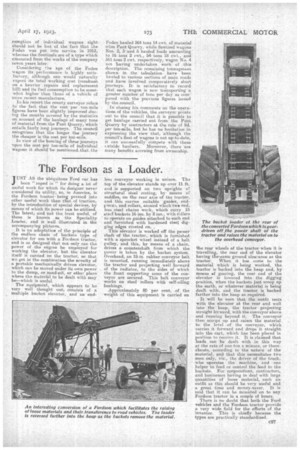Costs for a Fleet of Steamers.
Page 10

Page 11

If you've noticed an error in this article please click here to report it so we can fix it.
I T is seldom that the actions of muni cipal authorities receive the unqualified approval of the whole of the ratepayers in the area over which they exercise control, and as a result they have to run the gauntlet of criticism from those who disagree with their policy with regard to some local problem.
There will surely be few people, however, who can find fault with the methods which are employed by the average inuuicipality for keeping track of the working costs of its motor vehicles. They may question the action of the•authorities in using certain types of vehicles for specific purposes, but they will surely not quarrel with them for preparing comprehensive details relating to the activities of. these units. Such statistics, if collated in a useful form, provide those ratepayers who are interested with convincing evidence of the efforts which are being made to lessen their liabilities.
For example, one can readily ascertain, by carefully analysing data prepared by the county surveyor of Flintshire, that the cost of haulage of the fleet of steam wagons owned by this authority has decreased in the six months to the end of September last, as compared with the cost during the preceding nine months, the actual difference in the average cost per ton-mile for haulage by five wagons being represented by 110. and 140. Details of working costs and of the work performed by each wagon (four Sentinels and a Foden) are set out in the tabulation herewith, from which it will be seen that in the six months the vehicles hauled 11,186 tens on a total coal consumption of 128 tons 9 cwt. If a comparison is made in the 'fuel con
sumptiou of individual wagons sight should not be lost of the fact that the Foden was put into service in 1912, whereas the Sentinels are of a type which emanated from the works of the company
seven years later. • Considering the age of the Foden wagon its performance is highly satisfactory, although one would naturally expect its total working ,cost (resultant on a heavier repairs and replacement bill) and its fuel consumption to be somewhat higher than those of a vehicle of mere recent manufacture.
in his report the county surveyor refers to the fact that the cost per -ton-Mile figures have been slightly improved daring the months covered by the statistics on account of the haulage of many tons of material from the Pant Quarry, which entails fairly long journeys. The council recognizes that the longer the journey the cheaper is the cost per ton-t-nile.
In view of the hearing of these journeys upon the cost per ton-mile of individual wagons it should be mentioned,that. the Foden hauled 264 tons 14 cwt, of material trbm Pant Quarry, while Sentinel wagons Nos. 2, Sand 5 hauled loads amounting to 16 tans 2 cwt., 54tons 18 cwt., and 361 tons 2 cwt. respectively, wagon No. 4 not having undertaken work of this description. The remaining tonnagesias shown in the tabulation have been hauled to various sections of main roads and have involved comparatively short journeys. It is satisfactory to record that each wagon is new transporting a greater number of tons per day as compared with the previous figures issued by the council.
In closing his comments on the operations of the vehicles, the surveyor points out to the council that it is possible to get haulage carried nit from the Pant. Quarry by contractors at the rate of 9d. per ton-mile, but he has no hesitation in expressing the view that, 'although the council's fleet of wagons is not up-to-date, it can successfully compete with these intside hauliers. Moreover, there are ninny benefits accruing from ownership.






























